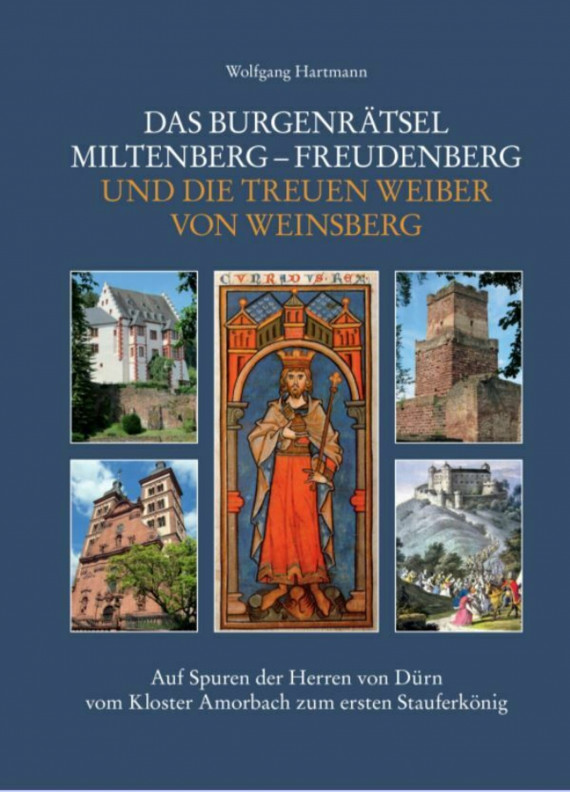CASTLE HISTORY
According to new findings of historical research, Mildenburg was very probably built from 1144 by a member of the noble free lords of Weinsberg named Burkard on behalf of King Conrad III. built. In 1140, the first ruler from the high nobility of the Staufers had defeated his powerful opponent, Duke Welf VI, in the Battle of Weinsberg (near Heilbronn). defeated. Konrad allowed the women of the capitulating garrison of the Guelph Castle Weinsberg to leave freely with their portable belongings. The women used this promise for a ruse: they carried their men out of the castle and thus saved them from impending execution. The term "Faithful Weiber von Weinsberg" has become famous around the world as a result of the event documented in the Cologne King's Chronicle. Weinsberg Castle got its name "Women's Loyalty" from this event.
King Konrad kept his promise and let the women go with their unexpected belongings. As can be deduced, a few years later the Staufer commissioned the leader of the pardoned castle defenders named Burkard and his brother Rupert - he became the progenitor of the lords of Dürn (Walldürn) - with the construction of two castles on the property of the Amorbach monastery, of which he was the chief bailiff had taken over in 1144. The two Hohenstaufen castles built at strategically advantageous positions in the southern Mainviereck, which is important for traffic, were given the names Mildenburg and Frohburg. (The latter could be identified with the "robber's castle" near Freudenberg.) Their names obviously express the gratitude of the Weinsbergers to King Konrad and praise his clemency!
Mildenburg probably came into the possession of Archbishop Siegfried II von Eppstein of Mainz around 1200, during the German throne dispute between the Staufers and Guelphs. He documented in 1226 in "Miltinberg", certainly on the "Miltenburch", which was first documented in 1248 as a fiefdom of Mainz (the Dürn). It now secured Mainz's position of power and customs office on the south-western part of the Lower Main. Until the 18th century, the castle served as the official residence of the noble Mainz burgraves in their capacity as representatives of the sovereign in the Miltenberg office.
After the castle suffered severe damage during the Markgräfler and Thirty Years' Wars and the bailiff moved to the city in 1730, Mildenburg lost its actual importance. The castle finally became the property of the Princes of Leiningen in 1803 as a result of the Reichsdeputations-Hauptschluss. However, they already sold the castle in 1808 to consistorial councilor Carl Gottlieb Horstig. He was the first private owner of the Mildenburg. He was followed by a number of other private lords: Friedrich Gustav Habel, Wilhelm Conrady and the Normann-Loshausen family. The last private owner was their daughter, Annunziata Edle von Oetinger.
In 1979, the city of Miltenberg finally acquired the castle. At this point it was only partially habitable and in great need of renovation. For many years, those responsible were looking for a sensible use of the castle, until the idea was born in 2000 to set up a museum there together with the Diocese of Würzburg. Extensive renovation work began in 2010. In July 2011, the Miltenberg Castle Museum opened its doors.

The book published by the former Miltenberg district curator Wolfgang Hartmann in cooperation with the Miltenberg Museums provides information about the new research results on the emergence and early history of the Mildenburg and its surroundings: Das Burgenrätsel Miltenberg - Freudenberg und die Treuen Weiber von Weinsberg. Auf cen Spuren der Herren von Dürn vom Kloster Amorbach zum ersten Stauferkönig, Neustadt an der Aisch 2021, ISBN 978-3-9816592-2-1. The 278-page book with 170 mostly color illustrations is available for €29.80 from the Miltenberg Museums and bookshops.